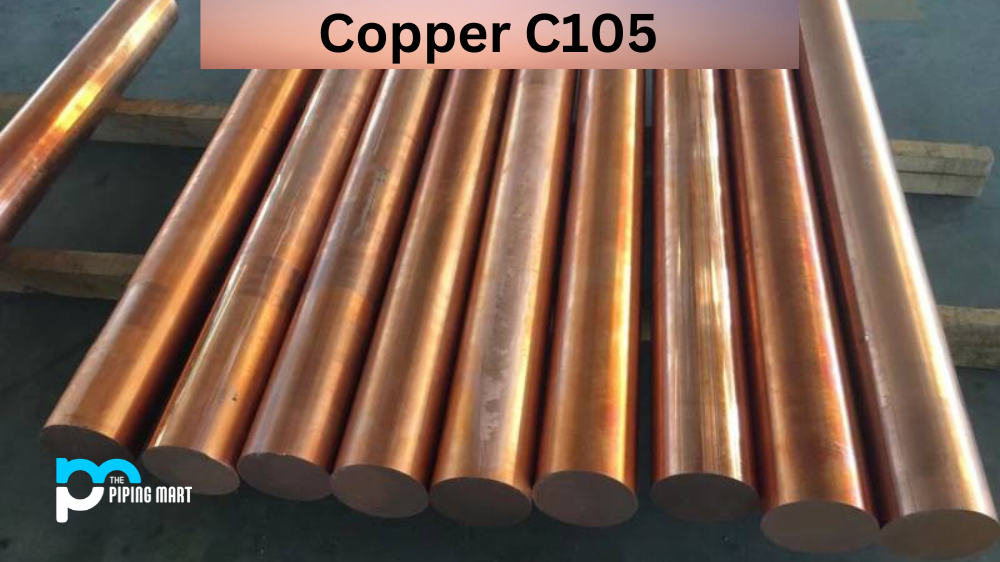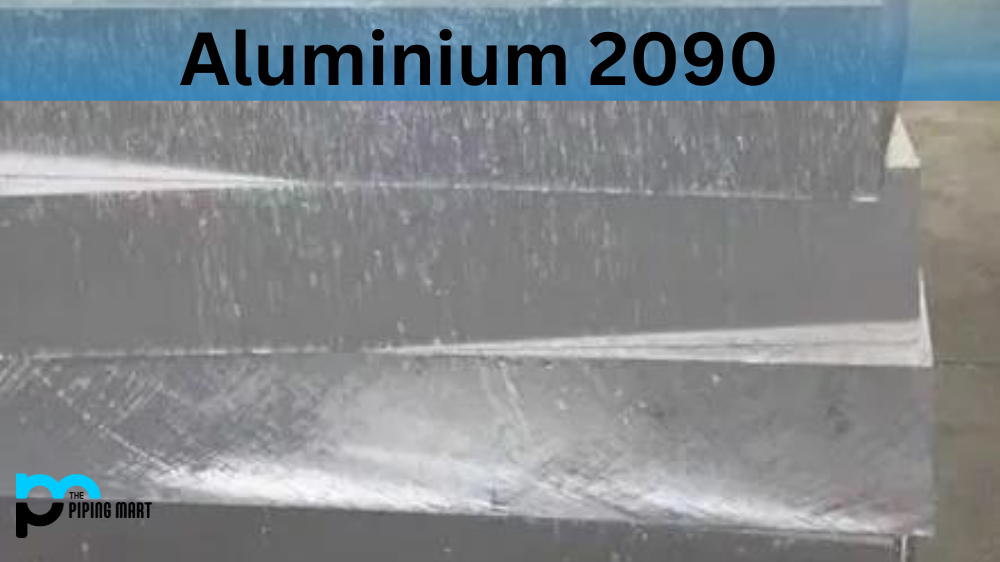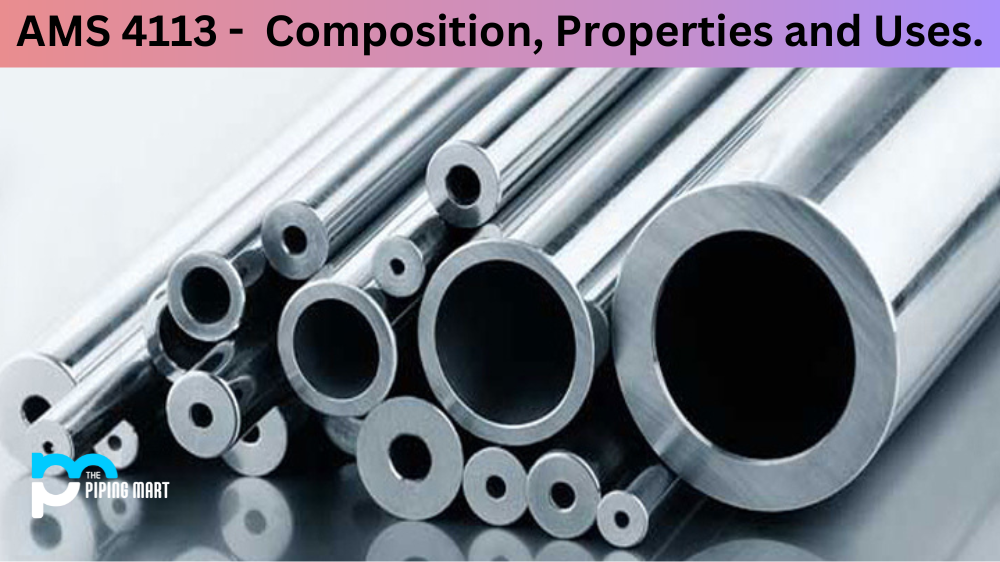Cu C105 is an alloy of copper, nickel, and iron, making it a material with an impressive range of properties. This alloy has high electrical and thermal conductivity, excellent corrosion resistance, good formability and weldability, and great machinability. It’s used in a wide range of industries and applications, such as aerospace engineering, power generation plants, and consumer electronics. Let’s dive into the composition, mechanical properties, physical properties, uses, corrosion resistance, heat resistance and treatment, machining techniques and welding of Copper C105.
Composition
The chemical composition of alloy C105 consists of 99% copper combined with 0.9-1.4% nickel and 0.05-0.35% iron. These elements give the alloy various desirable characteristics, including good formability, strength at elevated temperatures, excellent weldability and resistance to atmospheric corrosion.
| Nominal | Minimum | Maxiumum | |
|---|---|---|---|
| Copper + Silver | — | 99.95 | — |
| Silver | — | 10 oz/ton |
Mechanical Properties
The mechanical properties of grade C105 include tensile strength (Rm) of 400-550 MPa (58-81 ksi), yield strength (Rp0.2) of 60 MPa (9 ksi) or more depending on the formulation chosen by the manufacturer; hardness (HB) typically ranges between 50-80 HBW; elongation (A50) is typically 28%, while shear strength is approximately 150 MPa (22 ksi).
| Size Section | Temper | Tensile Strength psi | Yield Strength (.5% Extension Under Load) psi | Reduction of Area % | Elongation in 2” % | Rockwell Hardness | Shear Stength psi | Fatigue Strength | |||
|---|---|---|---|---|---|---|---|---|---|---|---|
| F | B | 30T | psi | Million Cycles | |||||||
| Flat Products | |||||||||||
| 0.040 in. | 0.050 mm | 32,000 | 10,000 | — | 45 | 40 | — | — | 22,000 | — | — |
| 0.025 mm | 34,000 | 11,000 | — | 45 | 45 | — | — | 23,000 | 11,000 | 100 | |
| Eighth Hard | 36,000 | 28,000 | — | 30 | 60 | 10 | 25 | 25,000 | — | — | |
| Quarter Hard | 38,000 | 30,000 | — | 25 | 70 | 25 | 36 | 25,000 | — | — | |
| Half Hard | 42,000 | 36,000 | — | 14 | 84 | 40 | 50 | 26,000 | 13,000 | 100 | |
| Hard | 50,000 | 45,000 | — | 6 | 90 | 50 | 57 | 28,000 | 13,000 | 100 | |
| Spring | 55,000 | 50,000 | — | 4 | 94 | 60 | 63 | 29,000 | 14,000 | 100 | |
| Extra Spring | 57,000 | 53,000 | — | 4 | 95 | 62 | 64 | 29,000 | — | — | |
| As Hot Rolled | 34,000 | 10,000 | — | 45 | 45 | — | — | 23,000 | — | — | |
| 0.250 mm | 0.050 mm | 32,000 | 10,000 | — | 50 | 40 | — | — | 22,000 | — | — |
| Eighth Hard | 36,000 | 28,000 | — | 40 | 60 | 10 | — | 25,000 | — | — | |
| Quarter Hard | 38,000 | 30,000 | — | 35 | 70 | 25 | — | 25,000 | — | — | |
| Hard | 50,000 | 45,000 | — | 12 | 90 | 50 | — | 28,000 | — | — | |
| As Hot Rolled | 32,000 | 10,000 | — | 50 | 40 | — | — | 22,000 | — | — | |
| 1.0 in. | Hard | 45,000 | 40,000 | — | 20 | 85 | 45 | — | 26,000 | — | — |
Physical Properties
The physical properties of Copper C105 alloy include a density of 8.89 g/cm3; melting point of 1040°C; thermal expansion coefficient of 9×10−6/K; electrical resistivity at 20°C 0.55×10−6 Ω·m; specific heat capacity at 20°C 386 J/(kg·K); modulus of elasticity 183 GPa; thermal conductivity 140 W/(m·K).
| English Units | C.G.S. Units | |
|---|---|---|
| Melting Point (Liquidus) | 1981°F | 1083°C |
| Melting Point (Solidus) | °F | °C |
| Density | .323 lb./cu. in. @ 68°F | 8.94 gm/cu. in. @ 20°C |
| Specific Gravity | 8.94 | 8.94 |
| Coefficient of Thermal Expansion | .0000094 per °F from 68°F to 212°F | .0000170 per °C from 20°C to 100°C |
| Coefficient of Thermal Expansion | .0000096 per °F from 68°F to 392°F | .0000173 per °C from 20°C to 200°C |
| Coefficient of Thermal Expansion | .0000098 per °F from 68°F to 572°F | .0000177 per °C from 20°C to 300°C |
| Thermal Conductivity | 226 Btu./sq. ft./ft./hr./°F @ 68°F | .934 cal./sq. cm./sec./°C @ 20°C |
| Electrical Resistivity (Annealed) | 10.3 Ohms (circ. mil./ft.) @ 68°F | 1.71 Microhm-cm @ 20°C |
| Electrical Conductivity* (Annealed) | 101% IACS @ 68°F | .586 Megohm-cm @ 20°C |
| Thermal Capacity (Specific Heat) | .092 Btu./lb./°F @ 68°F | .092 cal./gm./°C @ 20°C |
| Modulus of Elasticity (Tension) | 17,000,000 psi | 12,000 Kg./sq. mm |
| Modulus of Rigidity | 6,400,000 psi | 4,500 Kg./sq. mm |
Equivalent
| ASTM B133 | ASTM B298 |
| ASTM B187 | ASTM B355 |
| ASTM B189 | ASTM B3 |
| ASTM B224 | ASTM B49 |
| ASTM B1 | ASTM B506 |
| ASTM B152 | ASTM B188 |
| ASTM B2 | ASTM B246 |
| ASME SB152 | ASTM B272 |
Uses
Due to its impressive combination of mechanical properties such as high tensile strength and good formability, as well as its excellent electrical conductivity at elevated temperatures—Copper C105 can be used for a wide variety of applications in various industries such as aerospace engineering, power generation plants or consumer electronics just to name a few examples.
Corrosion Resistance
Copper C105 has excellent atmospheric corrosion resistance when compared to other materials due to its high nickel content, which helps it resist oxidation in air at higher temperatures than other alloys would be able to withstand under similar conditions without any additional coating or protection being applied to the surface like paint or plating etc.
Heat Treatment
Copper C105 is not recommended for heat treatment because it cannot be hardened or strengthened through this process since it already has relatively high levels of hardness due to its chemical make-up consisting mainly of copper combined with small amounts of iron and nickel, which are known for their hardness even without heat treatment increasing them further.
Machining
When machining Copper C105, the cutting speed should be kept low due to the fact that this alloy does not contain any free-cutting elements that would help increase throughput times during machining processes such as turning, drilling etc. A lubricant should also be used when machining this material in order to reduce the friction generated at higher speeds which could lead to premature failure on certain components, especially if they are being machined from thinner sheets rather than from thicker blocks etc.
Welding
Welding is possible on Copper C105 but only through special techniques such as TIG welding, where inert gases are used in order to protect the molten metal from oxidation during weld pool formation – these techniques require greater skill levels but also produce superior results when compared with more traditional methods like MIG welding which can lead to porosity issues if not done correctly due to oxygen contamination etc…
Conclusion
In conclusion, we can say that Copper C105 is an alloy made out mainly of copper combined with smaller parts of nickel & iron, giving it unique properties like excellent corrosion resistance & electrical conductivity even at elevated temperatures – making it ideal for use in many industries requiring these characteristics along with good formability & weldability plus it can also be easily machined using special techniques & lubricants thus making it a valuable material choice for many different types of applications & components alike!
With all this said, we hope you have gained some insight into why copper c 105 may be worth considering for your next project!

Abhishek is a seasoned blogger and industry expert, sharing his insights and knowledge on various topics. With his research, Abhishek offers valuable insights and tips for professionals and enthusiasts. Follow him for expert advice on the latest trends and developments in the metal industry.




